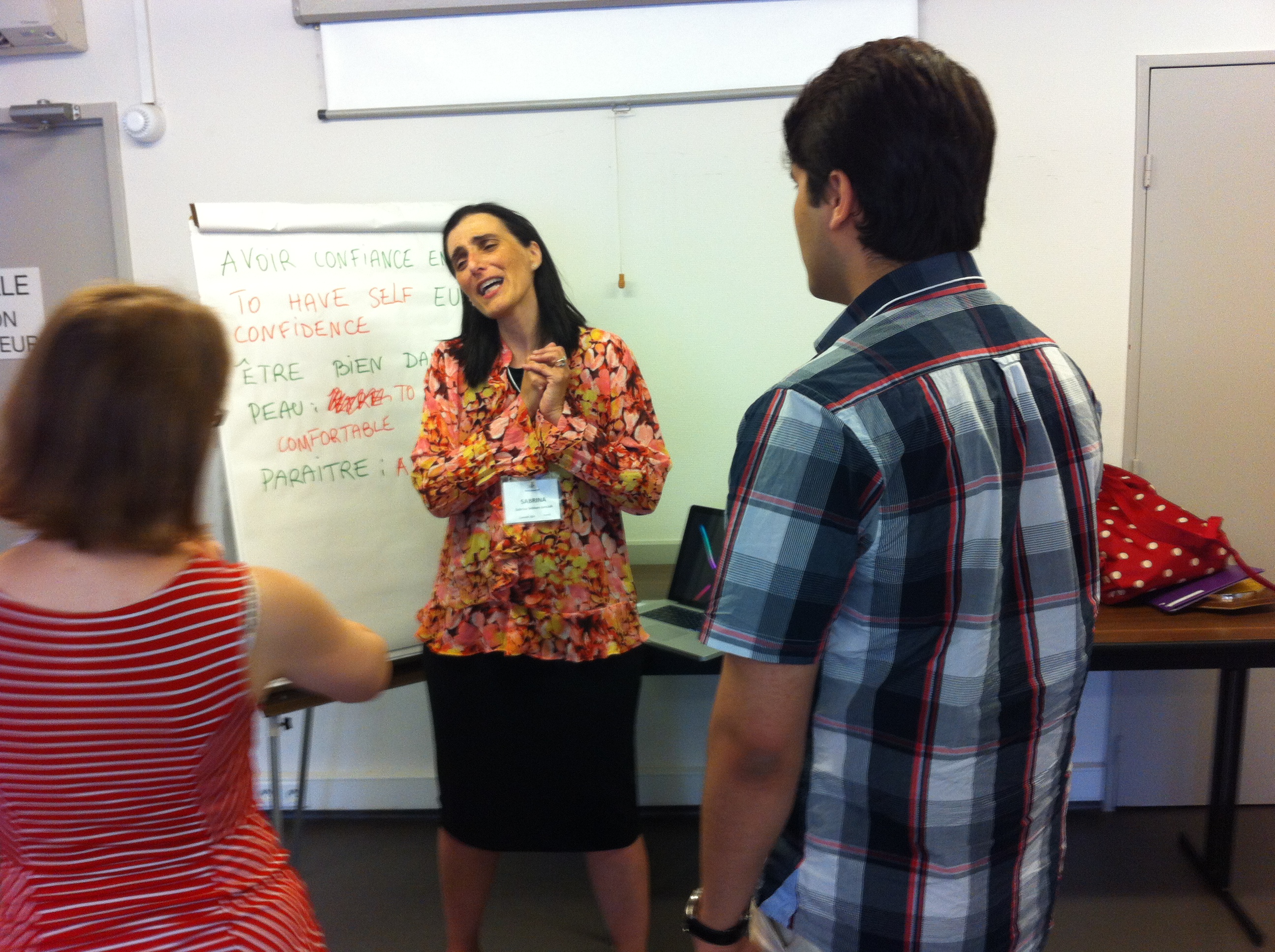I am in Agen, France, attending my very first TPRS workshop. I blogged about my expectations for this workshop here. On day 1, I experienced the TPRS method as a student. I also heard the following statement a lot: “shelter vocabulary, don’t shelter grammar”. I have to confess I did not understand what it meant; in fact, I thought this statement was completely counter intuitive. I try to provide my novice learners with a range of vocabulary but I tend to keep my structures pretty simple. After all, they are novice right? I was really intrigued to say the least, so I decided to keep it in a corner of my brain and see if observing seasoned TPRS teachers for a few days would shed some light.
If you have not had a chance to observe Lynette Saint George and Sabrina Sebban-Janczak teach, I highly recommend the experience! They each have their own style but they both teach to the heart of their students. The patient Lynette finds out that Lesley, a sweet old lady, likes to bake cakes: a story soon emerges about Lesley wanting to bake a cake but not having any eggs (a typical story line used in TPRS is for the main character to have a problem and to go to three different places to find the solution). The fiery Sabrina asks her adult intermediate learners about the ideal man: she gets laughter while teaching the subjunctive.
When I saw Lynette writing on the board and using phrases like “Comment tu te sens? Je me sens… How do you feel? I feel…” instead of just “Ça va? How are you?” and “Qu’est-ce qui te plait? What pleases you? (What do you like?)” instead of just “Qu’est-ce que tu aimes? What do you like?”, I realized she was using much richer structures with her novice learners than I do. This was later confirmed by Sabrina using structures “il s’agissait de – it was about”. Traditionally, textbooks prompt us to teach language in grammar chunks, from the most simple to the most complex. For example, we first teach the present tense, then past and future tenses, then the subjunctive mood, etc. But real language does not work this way. When students hear or read stories, characters often “did” and “will do” things, so even simple stories can move from present to past to future. Furthermore, students will need “je suis allé – I went” to talk about their week-end, they will need “Ça m’a plu – It pleased me – I loved it” to say how much they enjoyed something, etc. Why not teach them what they need?
These past two years, I progressively gave up teaching my novice learners complete verb forms at once. Instead, I focused on I/You/He/She because that’s all they need to communicate in all three modes of communication. I blogged about giving up grammar drills and using more authentic input here. TPRS teachers go further: they teach structures that are most frequent, regardless of their perceived “grammatical complexity”. To be clear, no one in the workshop suggested that subjunctive be taught to novice learners, but sheltering a few past tense structures from novice learners just because “we don’t learn past tense this year” does not make any sense. I have to say I am really excited about “sheltering vocabulary, not sheltering grammar”, I feel it is the right next step for me. It sounds and looks a bit messy, but it is a lot more natural and provides students with foundation structures that truly matter.
If you are wondering if I am becoming a TPRS teacher, I will provide an answer in a later post:)
Featured images: Sabrina Sebban-Janczak is setting Agen on fire!





Leave a Reply to Begin Your Journey Toward Language Acquisition with a Single Question: “How Do You Feel?” | The CardinalCancel reply